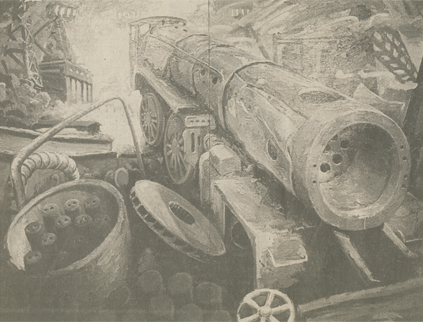The debris of the world examined closely in new work by Jonathan Waller and the Boyle family.
JONATHAN WALLER is an artistic scavenger. He paints mute agglomerations of abandoned machinery, obsolete locomotives; the sad relics of decline that litter the industrial graveyards of Scotland, Wales and the North. Waller's first one-man show in London, which opened at the Paton Gallery on Friday, confirms him as one of the most technically accomplished painters of his generation. The paintings, sketches and studies that make up the exhibition share a common theme, evident in titles like Degeneration or Run-ning Down: the slow paralysis that has crept over Britain's industrial heartland.
Throughout this exhibition, one senses the ghostly presence of Turner's great painting Rain Steam and Speed. If Turner celebrated the new mood of optimism heralded by the advent of the railway, Waller paints elegies to the dead ideals of the Industrial Revolution. Rain, steam and speed became metaphors, in Turner's painting, for the new freedom of vision granted to man by his invention of the railway. Waller's trains, by contrast, are static, comdemned to rust forever in some forgotten cul-de-sac. He was born in 1956, and perhaps the most impressive aspect of his painting is its sheer technical mastery. Waller treats paint almost like a comestible, applying buttery layers of pigment to convey the multi-hued patina of rust, or the rich, creamy clouds of steam that billow across his canvases. He has, also, a magnificent grasp of how to convey sheer weight, the dense and heavy presence of his me¬tallic corpses.
There is great subtlety, too, in the ways in which Waller plays on the anthropomorphic pos-sibilities of his chosen lumps of scrap. Generator, which looks initially like a straightforward ren¬dering of mechanical debris, resolves itself, on further inspection, into a strange sexual...


